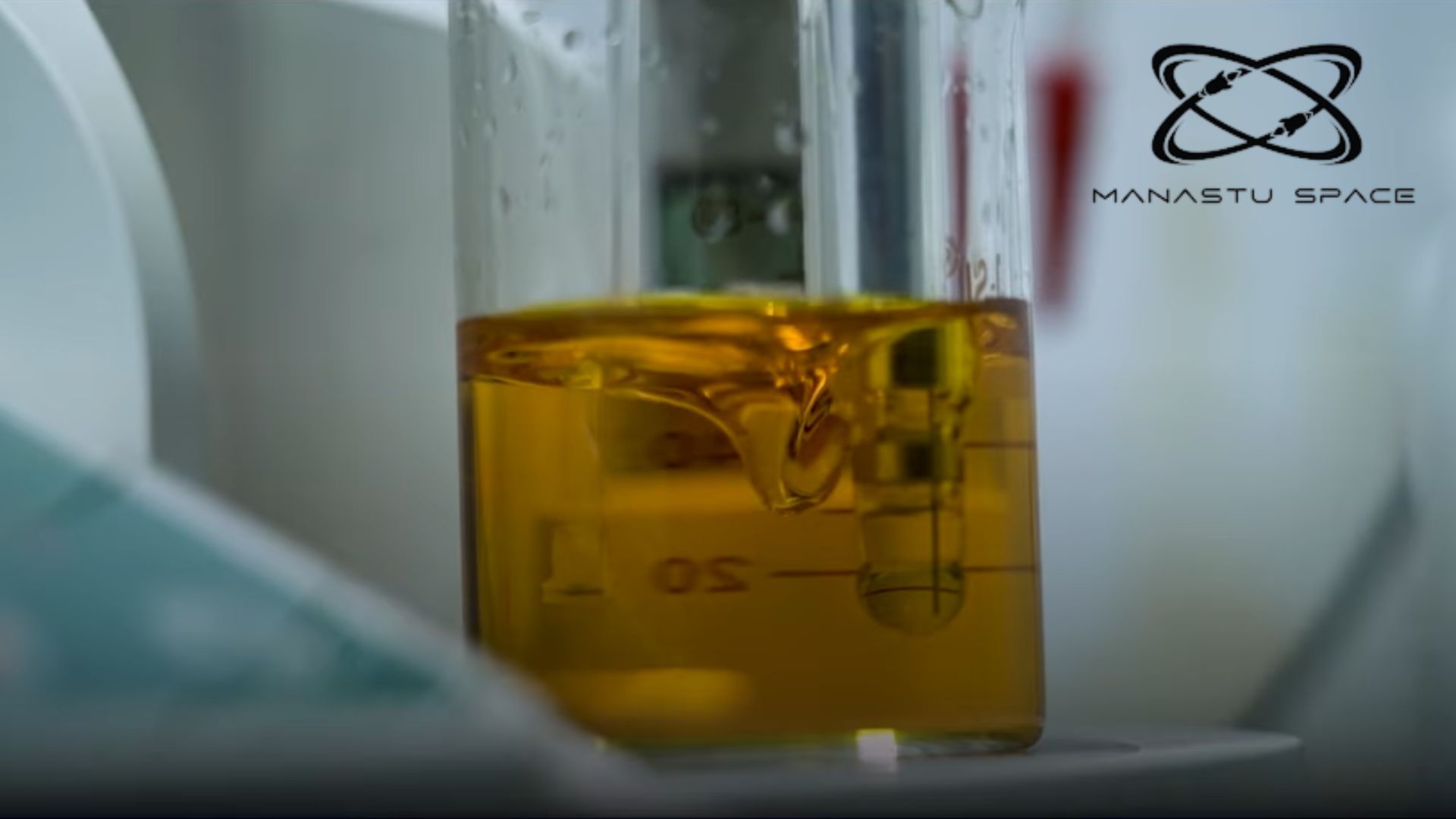New Delhi: The go-to choice for spacecraft fuel today is hydrazine, a toxic and carcinogenic fuel that requires Self Contained Atmospheric Protective Ensemble (SCAPE) suits for loading into satellites. These suits offer full-body protection and isolation from the external environment, with oxygen cylinders. Space Agencies around the world are phasing out the use of this toxic fuel, and New Space startups in India such as Manastu Space and Bellatrix Aerospace have developed the green propellants necessary for satellites. The formulation by Manastu Space allows the fuel to be loaded into satellites with basic protection gear such as a lab coat, goggles and a mask.
Propellant Lead at Manastu Space explains, “Our innovation is a hydrogen peroxide-based green propellant. It is a mixture of hydrogen peroxide and alcohol. Hydrogen peroxide, being the pioneer of this space race, it got replaced by Hydrazine because of its performance. But later people figured out it’s highly toxic and carcinogenic to the people who are using it. And currently, US and most of the Europe countries are planning to ban the use of Hydrazine in upcoming years. We wanted to bring hydrogen peroxide back into the race, being less toxic. You can say it’s toxicity is similar to common salt. To improve the performance, we made our own blend of propellants, which is a combination of some alcohols.”
Demonstration in Earth Orbit
The Vyom 2U thruster developed by Manastu Space uses the green propellant known as MS289. The Vyom 2U thruster was successfully demonstrated with the POEM platform on ISRO’s PSLV-C60 mission. Having a proven flight heritage will help Manastu Space attract more commercial customers, with a more powerful version of the thruster, the iBooster already delivered to DRDO. The green fuel developed by Manastu Space is a more environmentally friendly option for prepping spacecraft on the ground before the launch, but also improves the sustainability in space by allowing satellites to execute collision avoidance manoeuvres, and reduce space debris.
